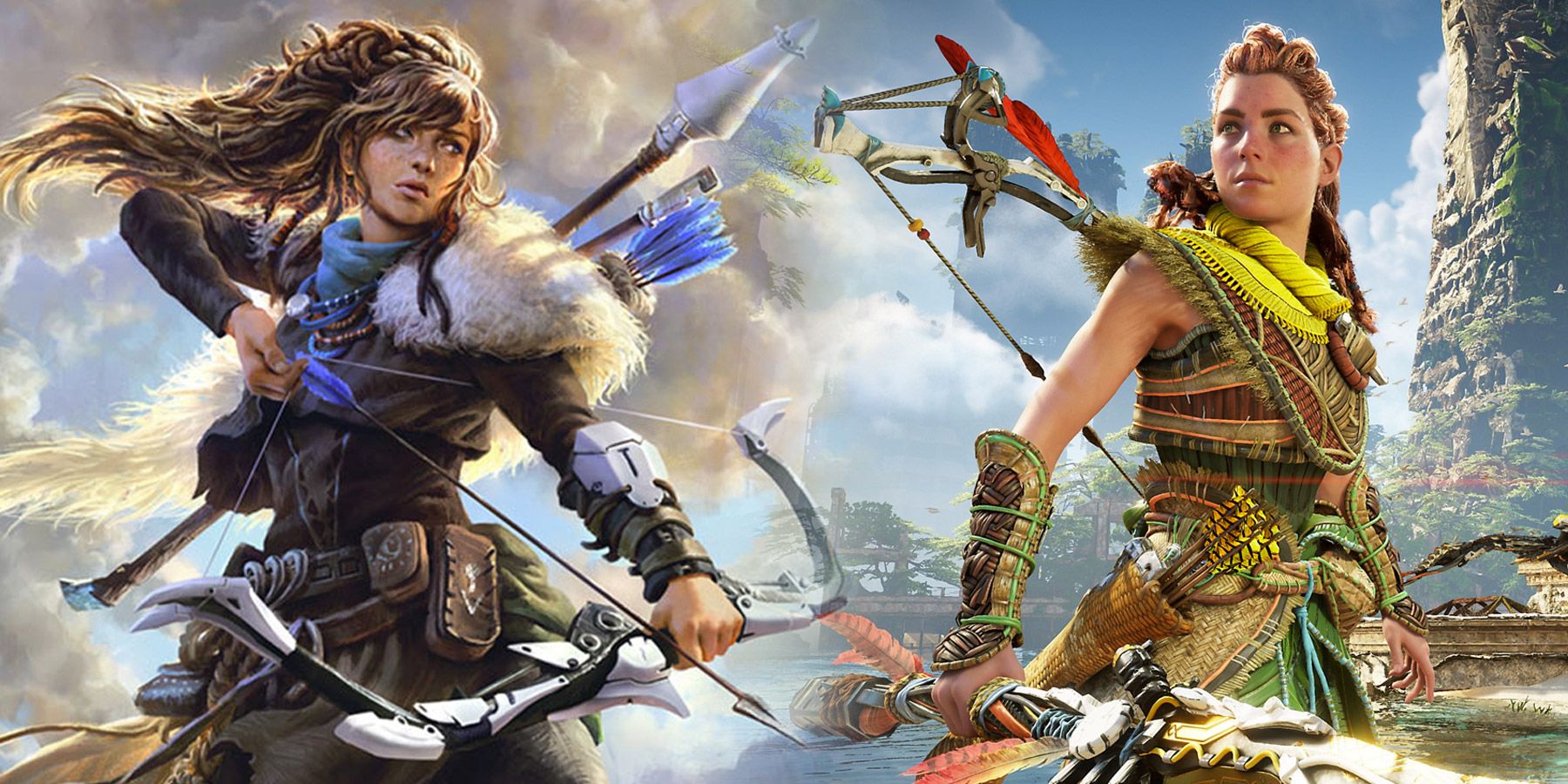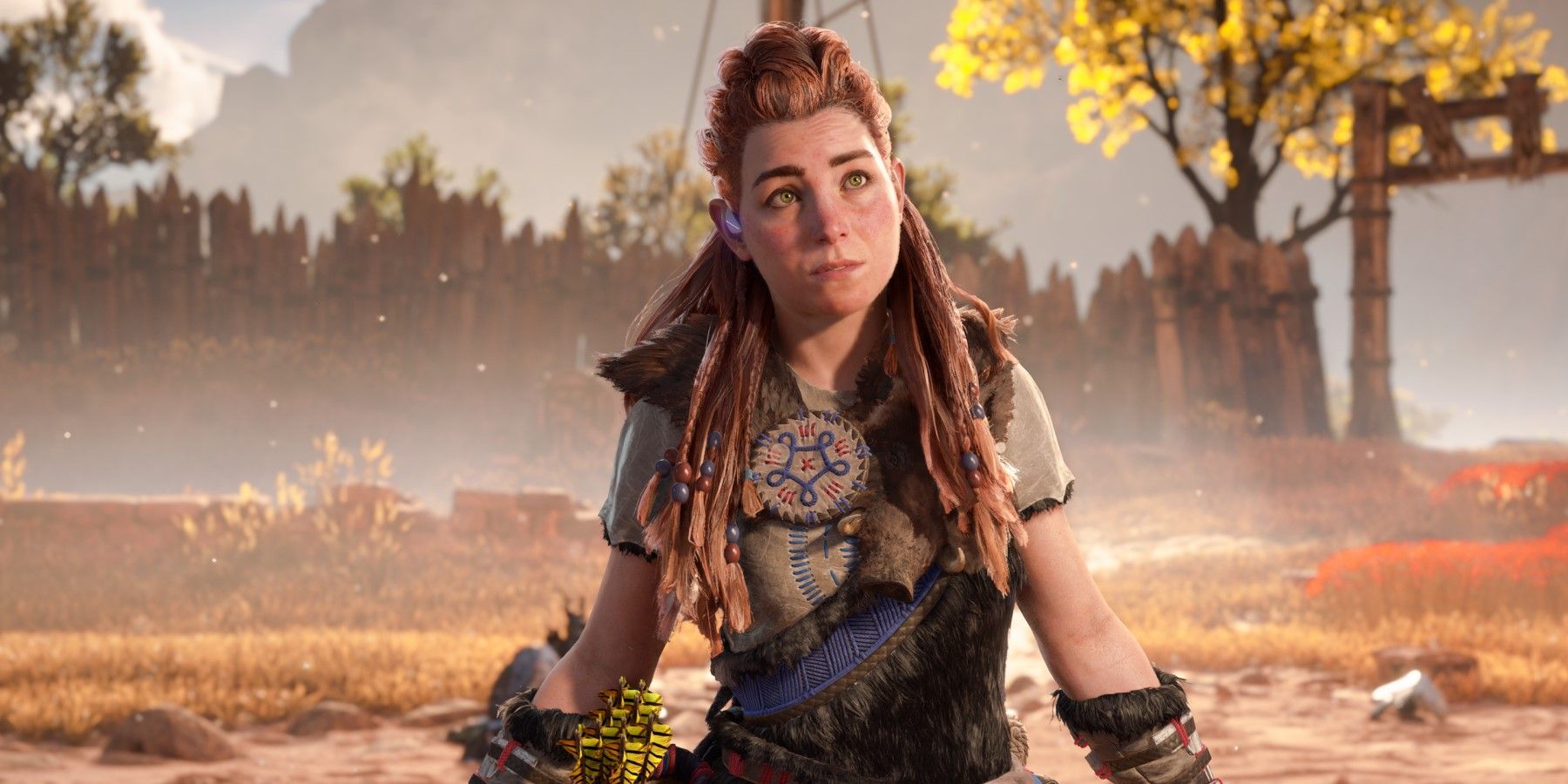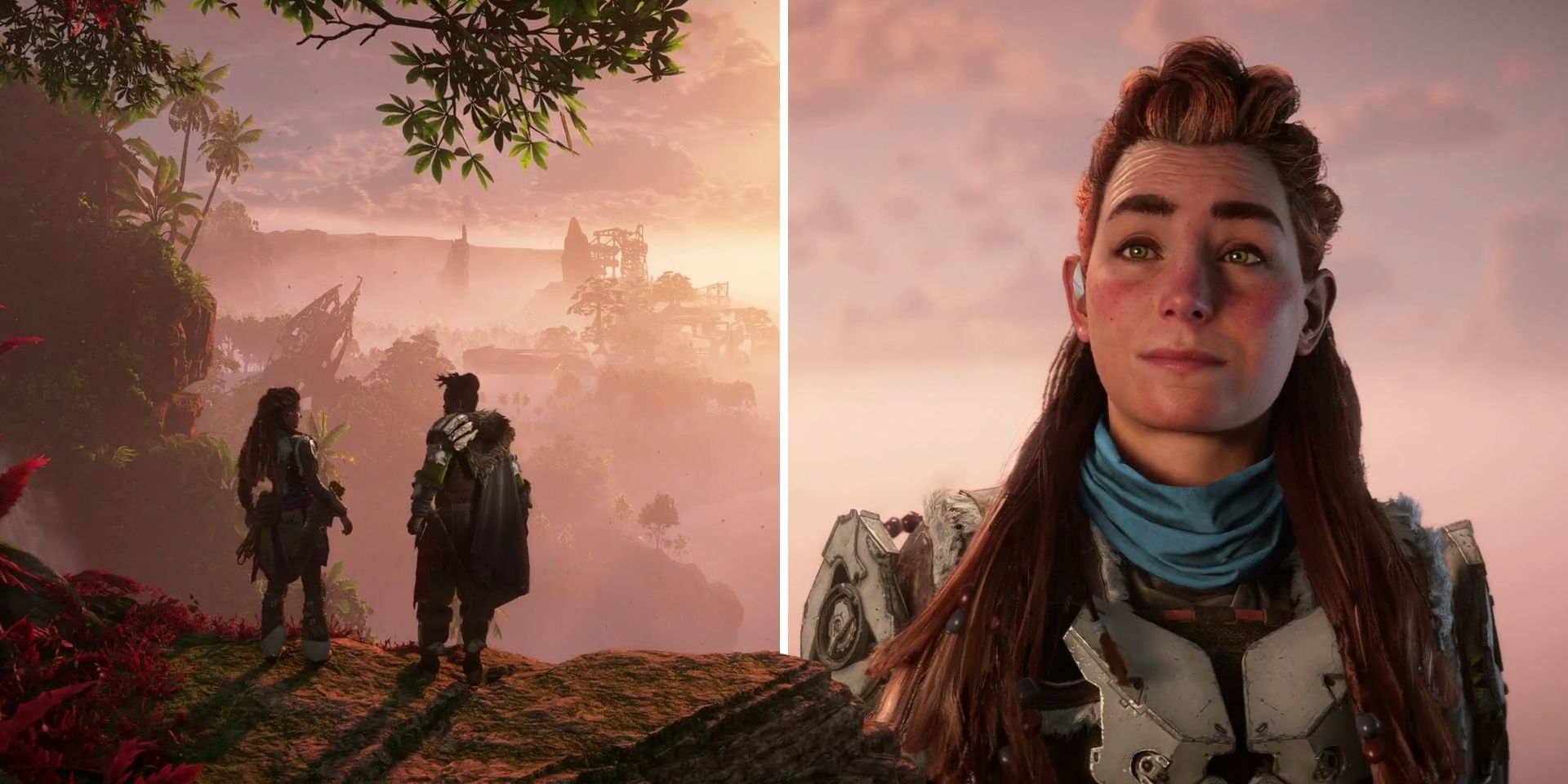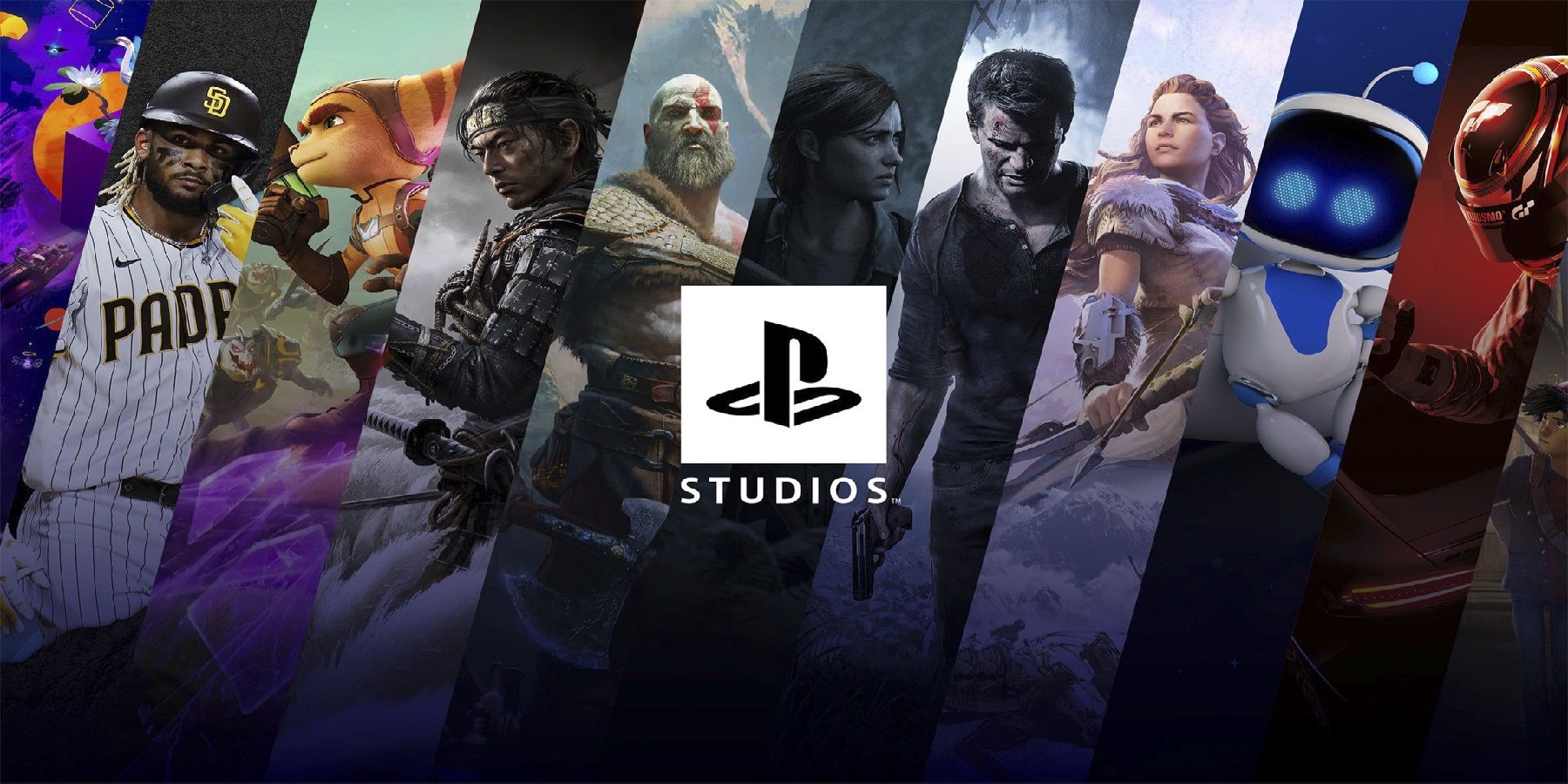Following the launch of Horizon Forbidden West on PS4 and PS5 last week, players are once again exploring all that Guerrilla Games’ post-apocalyptic universe has to offer. In a lot of ways the critically acclaimed open-world sequel builds directly on top of the foundation that was established in 2017’s Horizon Zero Dawn. Aloy’s sophomore adventure subsequently picks up and runs with the story and gameplay threads that the first entry in the series established. While there’s been some welcome quality of life updates and new mechanics added to the mix, Guerrilla has focused largely on giving fans more of what they loved.
With this clear design philosophy in mind, it’s not particularly shocking that both games open in similar ways. Since Horizon Forbidden West’s launch, fans on the internet have been discussing just how much in common the sequel’s introduction has with the one seen in Horizon Zero Dawn. It can be argued that everything from the narrative themes, world design, and even pacing is almost beat for beat the same between both adventures. For several compelling reasons, though, Guerrilla Games’ decision to stick to an already successful formula isn’t a bad thing by any stretch of the imagination.
Comparing the Horizon Intros
Back in 2017, Horizon Zero Dawn’s introduction was celebrated by critics and fans alike. Adopting a narrative trick seen in other PlayStation games like Uncharted 3, Guerrilla gave players the opportunity to experience key parts of Aloy’s early years. During Zero Dawn’s opening hours, an emphasis was placed on establishing what made the protagonist tick while teasing a world overrun by robots. Unlike the rest of the game, the action was also confined to a small section of a larger open-world. Having established Aloy’s status as an outcast among the Nora, players were eventually given the opportunity to undertake the 'Proving'. It was only upon the completion of this event, and the death of Aloy's surrogate father figure, that players were fully set free in order to seek out revenge and destiny.
Strikingly, Horizon Forbidden West's opening hours re-visit all of these themes. Following the apparent death of Hades at the end of Zero Dawn, Guerrilla Games’ sequel picks up with Aloy’s investigation into a set of connected cataclysmic occurrences. This mission leads to the hero poking around in an abandoned old-world location that’s even similar to the one seen in the first game's own introduction. After learning of Sylens’ deceit at the end of this linear stretch of gameplay, players are locked once again into an enclosed space within the open-world. During the second half of the introduction, a series of quests then play out that build toward another ceremonial event. Following the collapse of the 'Embassy', an assault by an antagonistic force, and the death of a prominent character, players are once again fully unleashed into the Horizon universe to uncover answers.
Examining the concepts that Guerrilla has built both introductions around makes it obvious that the design philosophy is a deliberate one. While they aren’t identical, both undeniably feature the same noticeable hallmarks. Narrative threads about identity, loss, and the weight of destiny, all run through the core of both for good measure too. There might not be a flashback to her youth in Horizon Forbidden West's opening hours, but that doesn't stop the return of Varl from dragging those memories of isolation back to the front of Aloy's personality, either. It’s really a testament to Guerrilla and the compelling universe it’s built that despite this familiarity, it can be argued that things never feel boring or repetitive.
Horizon’s Narrative Backbone
Guerrilla Games hasn’t gone back to its original blueprint for no reason, though. Re-treading ground like this is not only justified, but also something that benefits Horizon Forbidden West in the long-run - particularly from a narrative standpoint. One of the biggest factors that’s allowed the series to quickly establish itself as a cornerstone of Sony’s lineup is the complex universe that Guerrilla has built. Being set in the far-future following a robotic singularity means there’s a lot of sci-fi tropes and themes for players to juggle in their minds. That’s before even factoring in the lore surrounding the tribal culture that dominates Horizon’s post-apocalyptic landscape, or Aloy’s clone-based lineage.
Adopting a slower approach to the start of Horizon Forbidden West allows Guerilla to ease players back into all of these complex plot threads gradually, at a manageable pace. Considering how nearly five years have passed since Horizon Zero Dawn’s excellent The Frozen Wilds expansion, it makes sense that the studio has created a re-introduction based on a tried and tested formula. Having successfully enticed millions of players into what could have been an intimidating universe in the first place, there’s a solid chance that a familiar structure will work to get many back up to speed once again. Taking more time to establish a game’s narrative like this also works as an effective way to build up to riskier story ideas further into the experience, too. This is something that both Horizon games do, and they utilize the approach well.
Horizon’s Unique PlayStation Identity
Even though Horizon Forbidden West’s introduction shares a lot in common with its forbearer, it’s worth looking at how unique both games are when compared to Sony’s other narrative-driven experiences. Amongst PlayStation’s first party output, the slow and calculated approach that Guerrilla Games has relied upon is something of an outlier. Titles like Marvel’s Spider-Man, Ghost of Tsushima, and each Uncharted installment all throw players into action-packed openings. Often, even if they’re built around an open-world like both Horizon games, they don’t slow down much, either. While Guerrilla’s approach has created similar experiences within its own franchise, in the wider scheme of things, both introductions serve as a nice change of pace from the games that populate the PlayStation ecosystem.
Aside from the narrative benefits that Guerrilla Games has reaped from the adoption of a familiar start for Horizon Forbidden West, there’s also some positive consequence on the gameplay side of things, too. Both of the Horizon games that have been released so far have come complete with deep RPG mechanics, skill trees, crafting, and combat systems. As much as players need time to adjust to the universe’s unique narrative composition, the same is also true of each of these gameplay mechanics. Even Aloy’s trusted Focus, a futuristic device that acts similarly to Batman’s Detective Vision, also features some unique characteristics that aren't often seen in other titles.
Keeping this in mind, it makes even more sense why Guerrilla has created two similar enclosed areas filled with easily manageable machines for players to experiment with at their own pace. Alternatively, allowing gamers to explore the universe’s gameplay in a fully open sandbox straight away could be an overwhelming experience filled with potential frustration. Even in their current state, it should also be pointed out that both Horizon games can be challenging experiences at the best of times, regardless of the difficulty that’s selected. As such, making sure that players have a decent understanding of how the game works within a controlled environment gives them the best possible chance to see Aloy's adventures through to their gripping conclusions.
Horizon Forbidden West is available now on PS4 and PS5.




